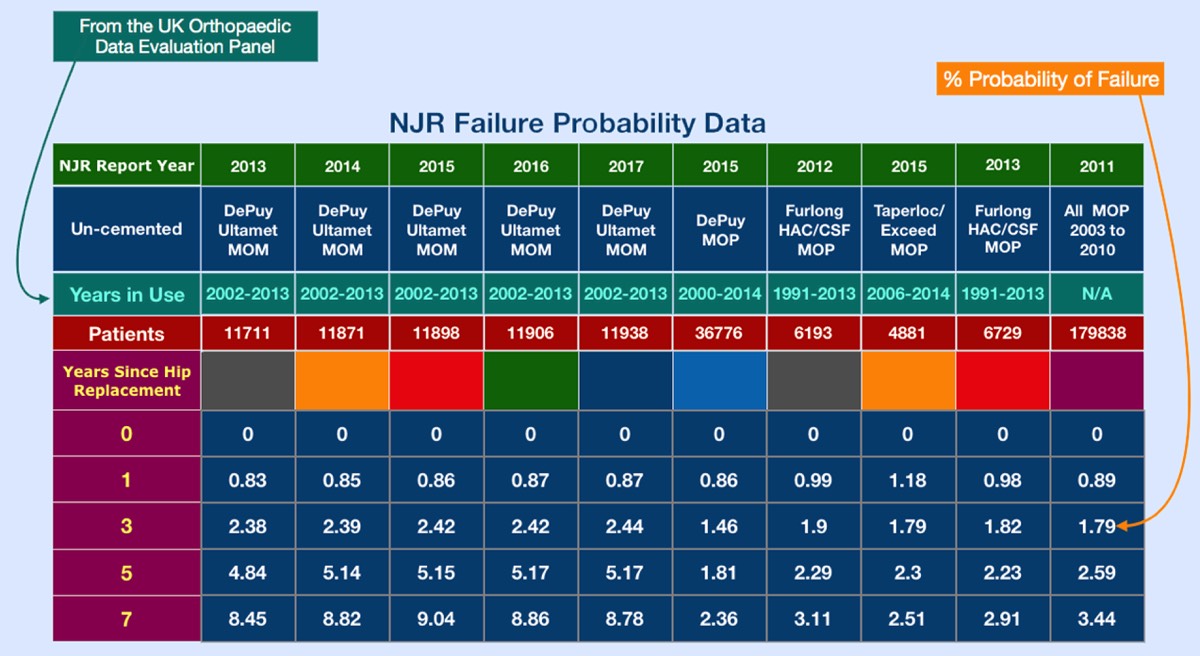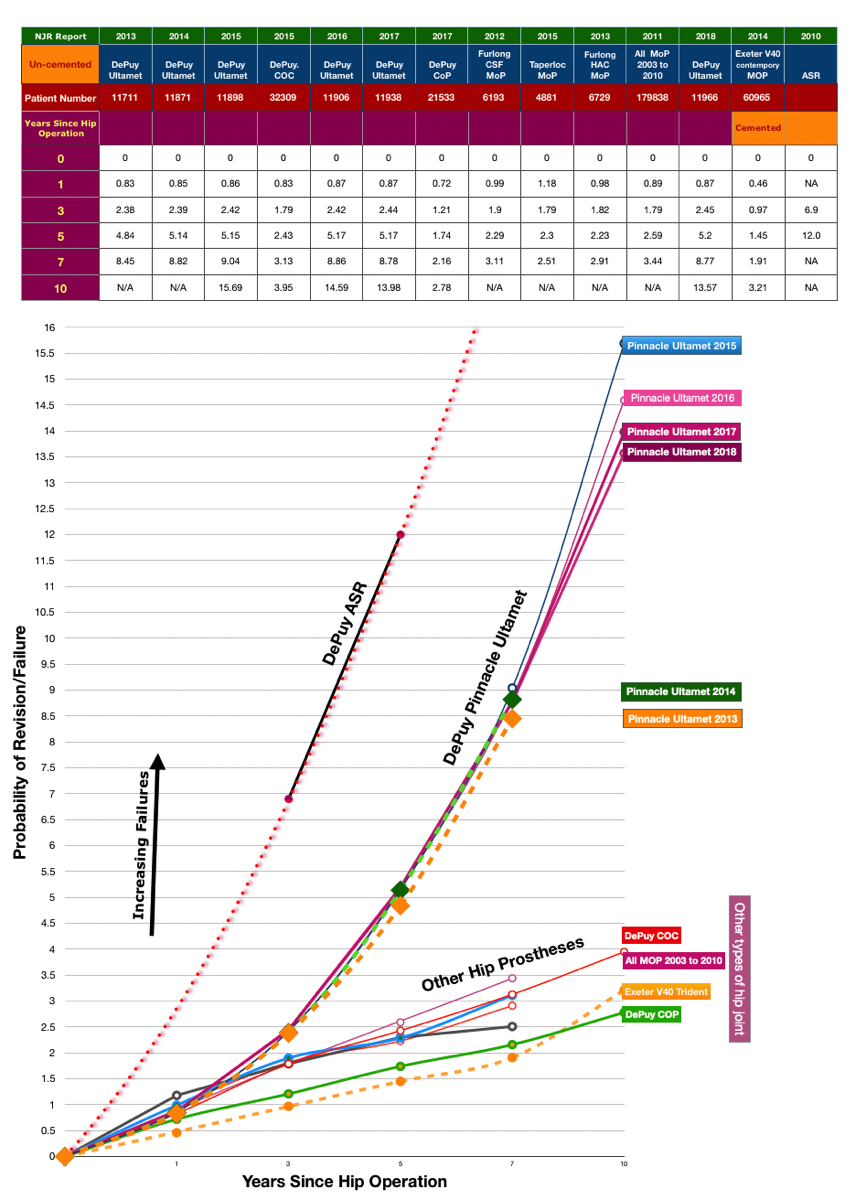I Do Not Agree With The Verdict ...... Part 4
Part 4
DEFECTIVE
Accordingly, DePuy is liable
The "evidence" given in Parts 1, 2 and 3 of this series is brought together here to show a graph which would influenced the trial outcome. All data used here was available at the trial. It just needed someone to ask the right questions.
In Part 1 - It was apparent that the defect was Ultamet's low durability and safety. The cause was the use of a Cobalt/Chrome metal-on-metal bearing.
In Part 2 - It was shown that Metal on Cross Linked Polyethylene bearings were in use in 1998 and that DePuy had their version (Marathon) available in 1997. It followed from this that it was perfectly reasonable to use UK National Joint Registry (NJR) data - something that I'm certain DePuy wished to avoid.
In Part 3 - It was demonstrated that there was no great "hip revision panic" in 2011-2012 by surgeons and patients, as put forward by DePuy in court. This again supported the use of NJR data. I seems that DePuy were trying to use the "hip revision panic" argument as another of their tactics to create more data doubts.
As a result of these points, the NJR data and graphs below are totally valid as far as a Trial decision is concerned, and prove that Ultamet performance was significantly worse than that of other prostheses.

Here are the figures shown graphically:

As you can see, Ultamet actually performs slightly better than some other hip types in the first year - but deteriorates rapidly from the second year after hip replacement.
In paragraphs 498 and 499 of the verdict, Mrs Justice Andrews says ...
"498. There is insufficiently reliable evidence to establish that the Ultamet did have a materially worse failure rate than either the rate that was expected of a comparator at the time, or the actual failure rate of a comparator (insofar as it is possible to make a reliable assessment of the latter).
499. Indeed, because the statistics are based on inadequate data, both in respect of the performance of the comparator and the performance of the Ultamet, the claimants cannot prove that the latter had a materially worse failure rate over the first 10 years than the actual failure rate of a comparator available at the time when it came onto the market. Even on the hypothesis, which I do not accept, that the NJR data for all MoP prostheses is a more reliable source of information about the CRR for a comparator prosthesis available on the market in 2002 than the data from SHAR, the claimants cannot establish that the Ultamet failed to meet the entitled expectation of safety.
The data and graphs, shown here, unambiguously illustrate that Ultamet was seriously defective, with a failure probability after 7 years, that is roughly 3 times higher that other artificial hips.
Notes:
1. The lower value of DePuy's Metal-on-Polyethylene hip illustrates that the defect is Ultamet's Cobalt & Chromium Metal-on-Metal design.
2. Both the DePuy MOP and the Furlong MOP hips predate Ultamet's introduction by 2 and 11 years respectively. If it had been possible to perform this comparison in 2002, the results would be the same.
3. Both I and my surgeon expected the safety of my hip replacement to be no worse than other prostheses.
4. For these and other reasons that I've given, I do not agree with the Verdict.